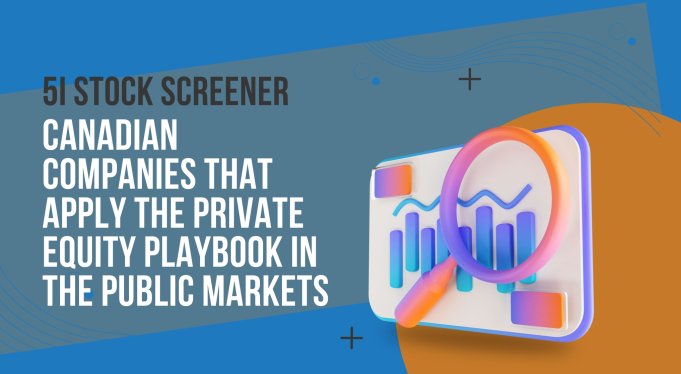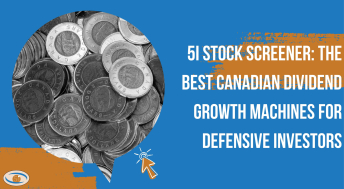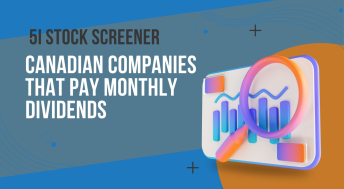Investors often hear the term “private-equity approach in the public market,” however, few actually understand the meaning and power of the model behind it. The term may sound quite fancy and “high finance” - this blog helps investors address such topics and explain how it can help investors potentially create above-average returns over time.
1. What is the Private Equity playbook in the public market?
Firstly, Private Equity investors do not look for the “traditional compounders” of high-growth, disruptive businesses early in their life cycle and hold on for decades. The primary criteria the private equity industry tends to look for are businesses with a high degree of predictability and a low risk of disruption.
In addition, these investors constantly seek companies with a high degree of recurring revenue, low customer churn, strong pricing power, and consistent cash flow generation. The purest forms of such businesses are subscription-based businesses like software, consumables, consumer brands and other high-recurring revenue products/services, etc. These businesses tend to be highly durable, independent of access to the capital market and able to support a decent amount of debt on the balance sheet even during a tough environment.
One of the primary value-creation engines of private equity investors is to raise prices prudently, control costs efficiently and put a moderate to high level of the amount of debt on these companies’ balance sheets. The debt level tends to vary for different companies, as some are more well-equipped to carry a higher level of debt, but the target leverage levels usually range between 2.0x – 5.0x net debt/EBITDA. The purpose of the debt is to amplify the value creation of the business either through organic growth or cost management.
As the business can grow EBITDA, then the leverage levels naturally go down, and these companies can leverage up again to maintain the target leverage levels and use the proceeds to do some value-creating strategies like acquisitions, buying back shares or paying out special dividends. The model reinforces itself, making even a low, moderate-growth business in EBITDA become a double-digit total return investment over time.
2. The beauty of this approach
Some of the most successful case studies in the U.S. market of this approach include Transdigm (TDG), Fico (FICO), and O’Reilly (ORLY). These companies provided a compounded annual growth rate (CAGR) returns for investors more than 20% over the last 5, 10, 15 years.
Their returns rival some of the best businesses of this generation, like Apple (AAPL), and Amazon (AMZN). The beauty of this approach is while companies like AAPL and AMZN achieved phenomenal returns by changing our lives in a huge way, the “private equity approach” companies are able to provide similar returns by selling basically the same goods/services.
Below we have screened for companies with the following criteria:
- Market cap larger than $50 million
- Net debt/EBITDA within the range of 2.0x -6.0x
- Total revenue growth of at least 5% on average in the last ten years
- Earnings before interest and taxes, depreciation and amortization (EBITDA) CAGR in the last 10 years of at least 5%
- Total shareholder return of at least 100% in the last 10 years
|
Of course, not every company can simply become a great investment by putting more debt on the balance sheet. The debt is a key component, acting as an amplifier, not the catalyst itself. As a result, investors should start off looking for good businesses first. This model simply does not work if the business is either in a declining state or abusing it by using debt in an undisciplined way (overleveraged).
The criteria above reflect companies with a target debt level between 2.0x – 6.0x net debt/EBITDA in the most recent quarter. Secondly, we like to see businesses with growing fundamentals. Therefore, we have screened for companies with a return and EBITDA growth of at least 5% per annum, each in the last 10 years. Lastly, we screen for companies that had at least 100% total shareholder return (dividend included) in the last ten years, as we want to screen only for long-term winners in this space.
Members will recognize some of the long-term winners that we cover in our Model Portfolios and coverage lists such as Dollarama (DOL), WSP Global (WSP), TMX Group (X) and TFI International (TFII)
As usual, these companies on the list are not recommendations, but rather a starting point that helps investors generate potential investment ideas.
Unlock the Power of Informed Investing with 5i Research!
DIY investing doesn't have to mean going it alone. At 5i Research, we're your trusted partner in navigating the stock market. Our platform offers comprehensive stock and market research, empowering you to make smart investment decisions.
- Investor Q&A: Have burning questions? Get answers from our team of experts and fellow investors in our dedicated Q&A section.
- Research Reports: With over 60 meticulously researched Canadian stocks, our reports offer in-depth analysis, giving you the confidence to invest wisely.
- Model Portfolios, Alerts, Forums, Portfolio Tracking, and Much More...
Take Care,

Disclosure: The analyst(s) responsible for this report have a financial or other interest in AMZN.






Comments
Login to post a comment.